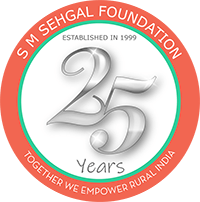MEWAT: It’s a hazy morning in a Mewat village and a bunch of young women sitting on a charpoy are glued to the radio set, listening to the recipe of the day on “Hello Saheli”.
Farheen, a young RJ, narrates a “channa saag” recipe in her thick Mewati accent, taking cues not from a chef but a local homemaker. In “Gyan ki Baat”, the next segment, the RJ quizzes her listeners about events from the Independence era.
For eight years, Radio Mewat has been talking about gender violence, conducting radio sessions and busting superstations in India’s most backward district. Funded by the central government, it reaches 168 villages and serves a population of about 5.5 lakh, says founder and filmmaker Archana Kapoor. All its employees are from Mewat and nearby villages. “Community radio is a dynamic thing, and through community engagement, we have developed programmes that cater to all listeners,” Kapoor says.
Then, there’s Alfaz-e-Mewat, founded in 2012, which now reaches 225 villages across Haryana and runs for 13 hours a day. When Alfaz-e-Mewat began, all the callers were men. Cut to 2018, and at least 20% of those calling are women. With little access to TV and none to computers, radio is the only local platform that connects them, raises important issues and makes voices heard across the community.
Life through short range
Radio Mewat hosts shows for everyone. So, there’s “Bachchon ki Duniya” for kids, and “Khet Khaliyan ki Baat” for farmers. Women can tune in to “Mahilaon ki Baat” and the elderly to “Buzorgon ki Baat”. “Hinsa ko No” tackles gender violence, “Hello Saheli” gives tips on food and beauty, while “Panchayati Raaj” advises listeners on local governance and “Gyan ki Baat” on Haryana, India and the world.
Nobody, insists Kapoor, is left out — probably why the village has accepted the radio as the most credible source of information. “Villagers know this is one place that listens to them, cares for them,” explains Kapoor. “So, whether it’s a case of rape, violence, injustice, marital dispute or a family dispute, they reach out to Radio Mewat because it has access to the authorities.”
Many stories of change have been authored through the radio. “If police are not registering a case, people come to Radio Mewat. If the education official is not listening to them, they will say, ‘Radio Mewat, aa jaye humare saath,'” says Sunita Mishra, a reporter from Nuh who has been with the station since its inception.
It has also helped empower the local youth, who have become its voice. Farheen, 20, overcame stiff opposition from her mother to become a mini celebrity in her village Khedla. She now interviews villagers with the confidence of a seasoned reporter. Farheen hosts three shows — “Hinsa ko No”, “Hello Saheli” and “Gyan ki Baat” — for which she gets village women on board. “They were initially apprehensive, but now love to come on the radio and get their voice heard,” she says.
The radio doctors
Barely 20km down the road, in Ghagas village, an Alfaz-e-Mewat RJ is going live with “Uljhan”, a show addressing mental health issues without identifying the callers. On “Uljhan”, the most common concerns revolve around issues like puberty, and the physical and mental changes it brings in an adolescent. “Teenagers feel awkward about asking around. Radio, being a confidential portal, helps,” says Puja Murada, founder representative of Alfaz-e-Mewat.
Also making a difference is Gurgaon Ki Awaaz, whose popular show, ‘Chahat Chowk’, initially faced flak for its content (sexual and reproductive health). Now, though, listeners appreciate it for its transformative potential. Most of the callers are migrant male workers unaware of physiological differences between genders, something that left founder Arti Jaiman confounded. “It is worrisome how skewed their understanding of women and their bodies is,” she says. Such has been the impact of “Chahat Chowk” that many men, on the advice of doctors on the show, have effectively undergone “couple counseling”.
Mind the lines…
Community radio’s embrace extends to handling complaints of sexual harassment and giving voice to members of the marginalised communities. Still, there are drawbacks of being non-mainstream, for these stations are not permitted to broadcast everyday news, and are banned from criticising the establishment.
Besides operational shortcomings, there is the dilemma of getting women employees to commit full-time. “I am struggling to get local women who can stay for long,” says Alfaz-e-Mewat’s Puja, adding, “In some procedures, the government process is slow — it took more than three years to get a licence.”
Despite these challenges, the success of Radio Mewat, Alfaz-e-Mewat and Gurgaon Ki Awaaz has demonstrated the value of community radio. And it’s not all about information and education. Radio Mewat, for example, is happy to play Haryanvi raginis and folk songs between each slot. Because radio works best when it’s both mentor and entertainer.


